Day 3 of our three day tour and it was time for the Wader Spectacular today. We had been mostly lucky with the weather and it was another nice day – pleasantly warm with patchy cloud and some nice sunny intervals after a cloudy start.
It was an early start for the drive over to Snettisham this morning, to get there in time to watch the rising tide. When we got out onto the outer seawall, we found a digger, a couple of vans and a car parked there. One of the particularly unhelpful jobsworth workers told us we couldn’t stop in our usual spot to watch the tide today. So we made our way a little further down, and as we did so a Turtle Dove flew past. A small flock of Pink-footed Geese came in overhead – they may have roosted out on the Wash but they were very high already, so could possibly be fresh arrivals from further north.
There were big groups of Oystercatchers and Bar-tailed Godwits gathered on the edge of the water up towards the sailing club, and as the tide caught up with them they slowly started to peel off and head past us, further up onto the drier mud.
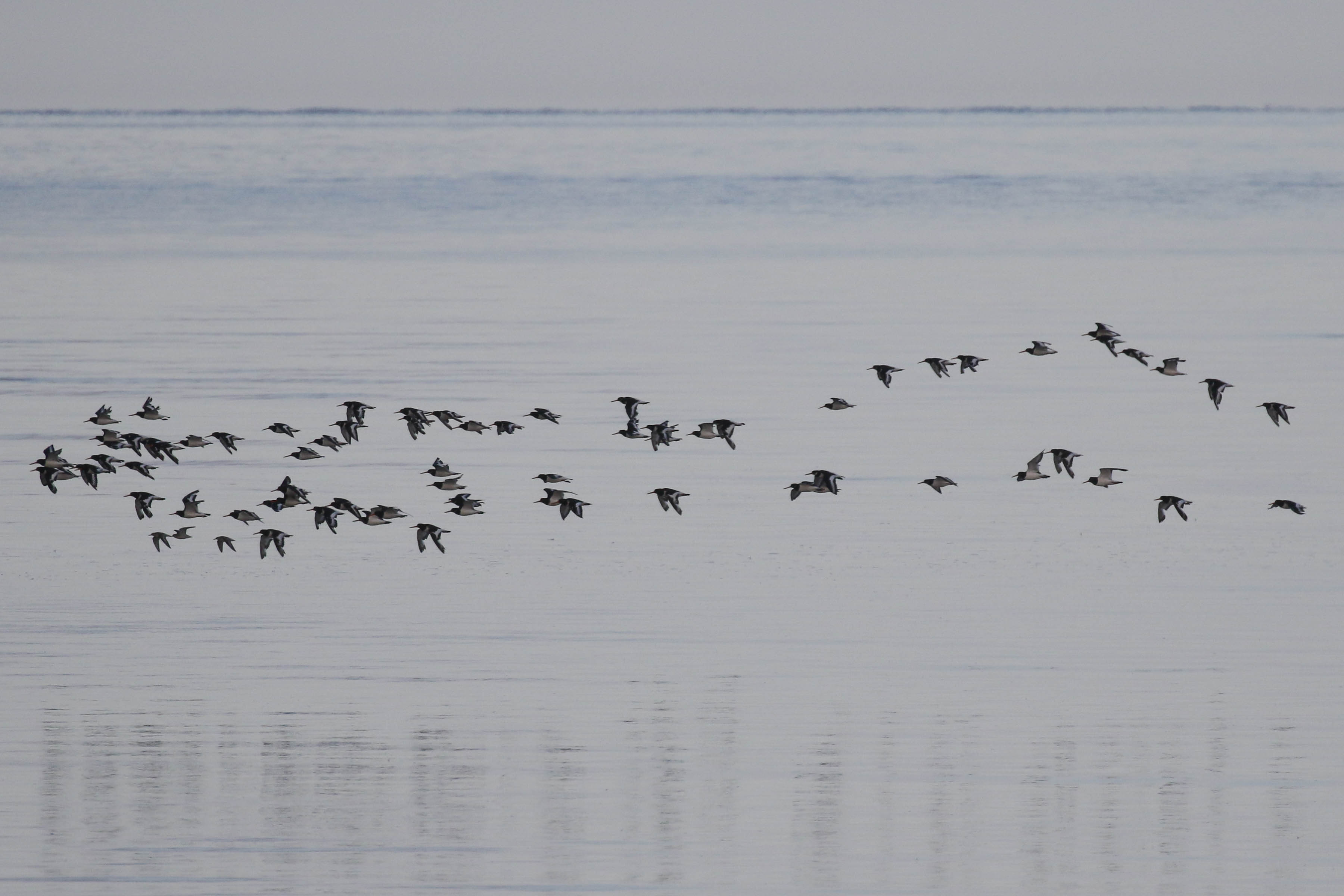
There were lots of Ringed Plovers scattered over the mud in that direction too, and scanning through we found three Curlew Sandpipers in with them. We got them in the scope, all juveniles. We could see a nice selection of Dunlin and Sanderling too, and as they started to fly down, some landed in front of us briefly but the mud was disappearing fast now.
Something spooked all the waders over the far side, towards the saltmarsh, and we were treated to our first sight of the swirling flocks. The Knot, in tight bunches, twisted and turned, making a variety of shapes in the sky. At one point, one group looked rather like a jellyfish!
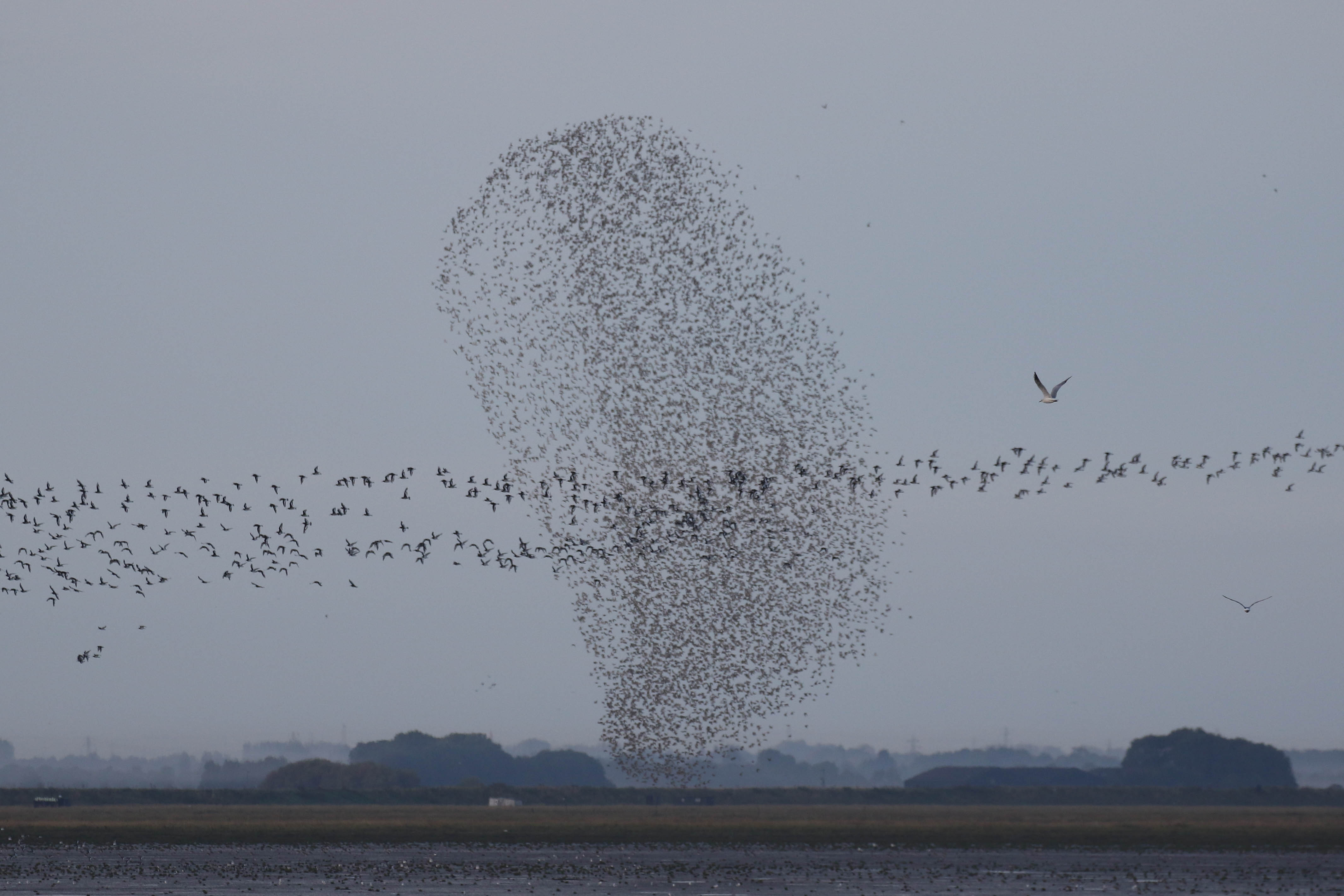
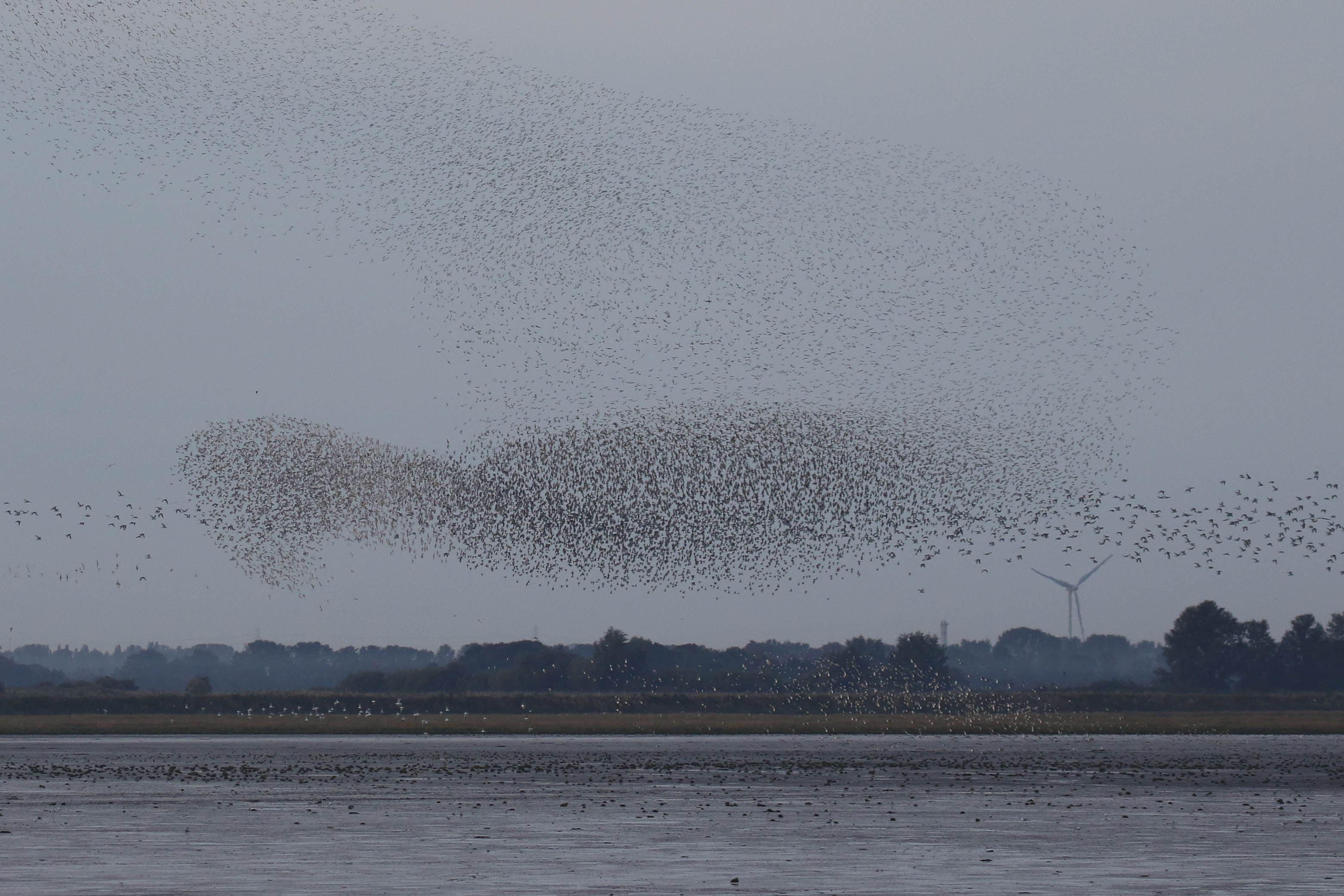
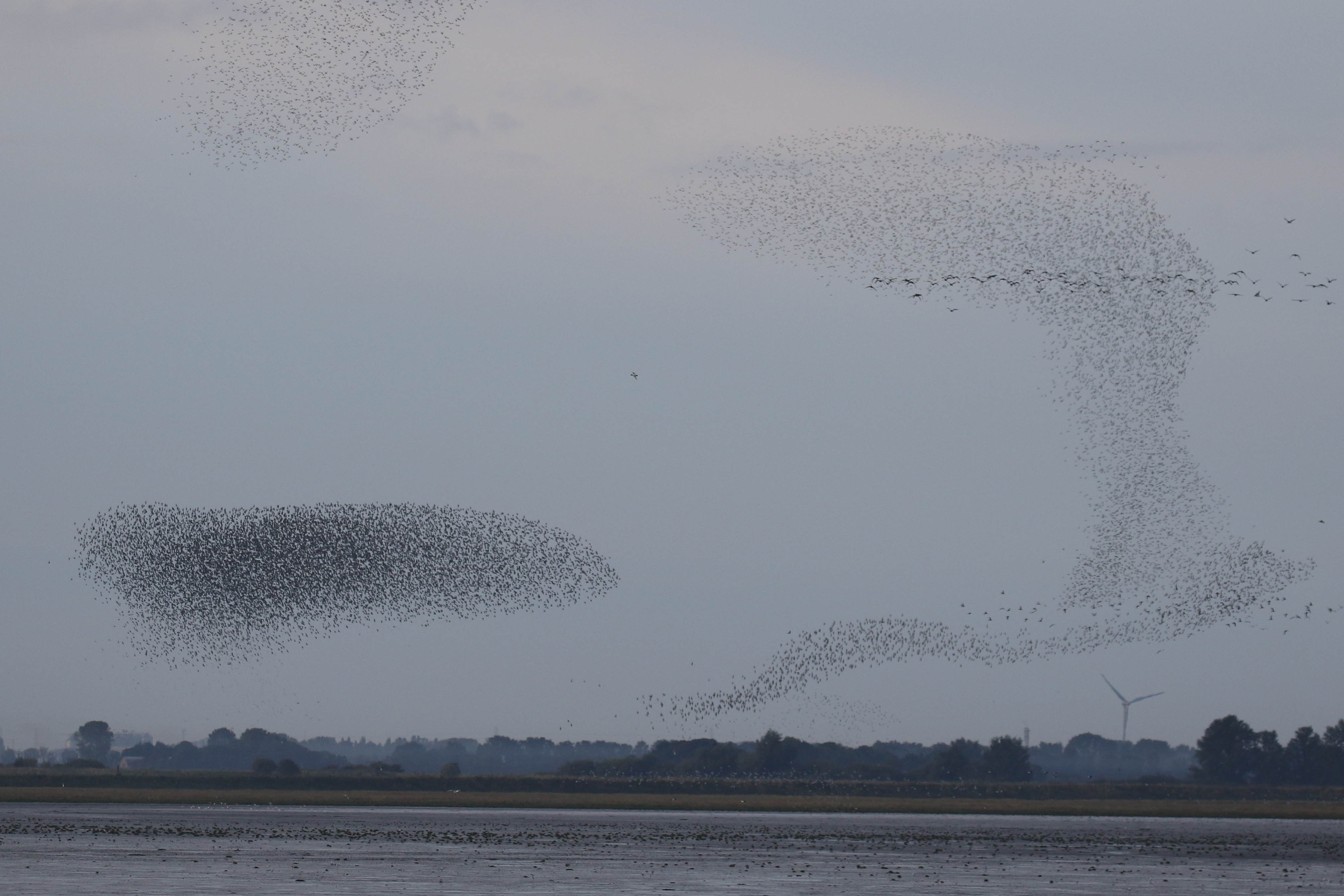
The Knot settled back down on the mud again, over towards the far corner. but the Oystercatchers circled round for a while and then turned and headed in to the Pit to roost already. We watched as they dropped down behind the bank. They were in very early today.
As we walked on down to the far end, the tide was coming in fast. The sun was starting to come out now, and the Knot strung out on the mud were shining in the sunshine.
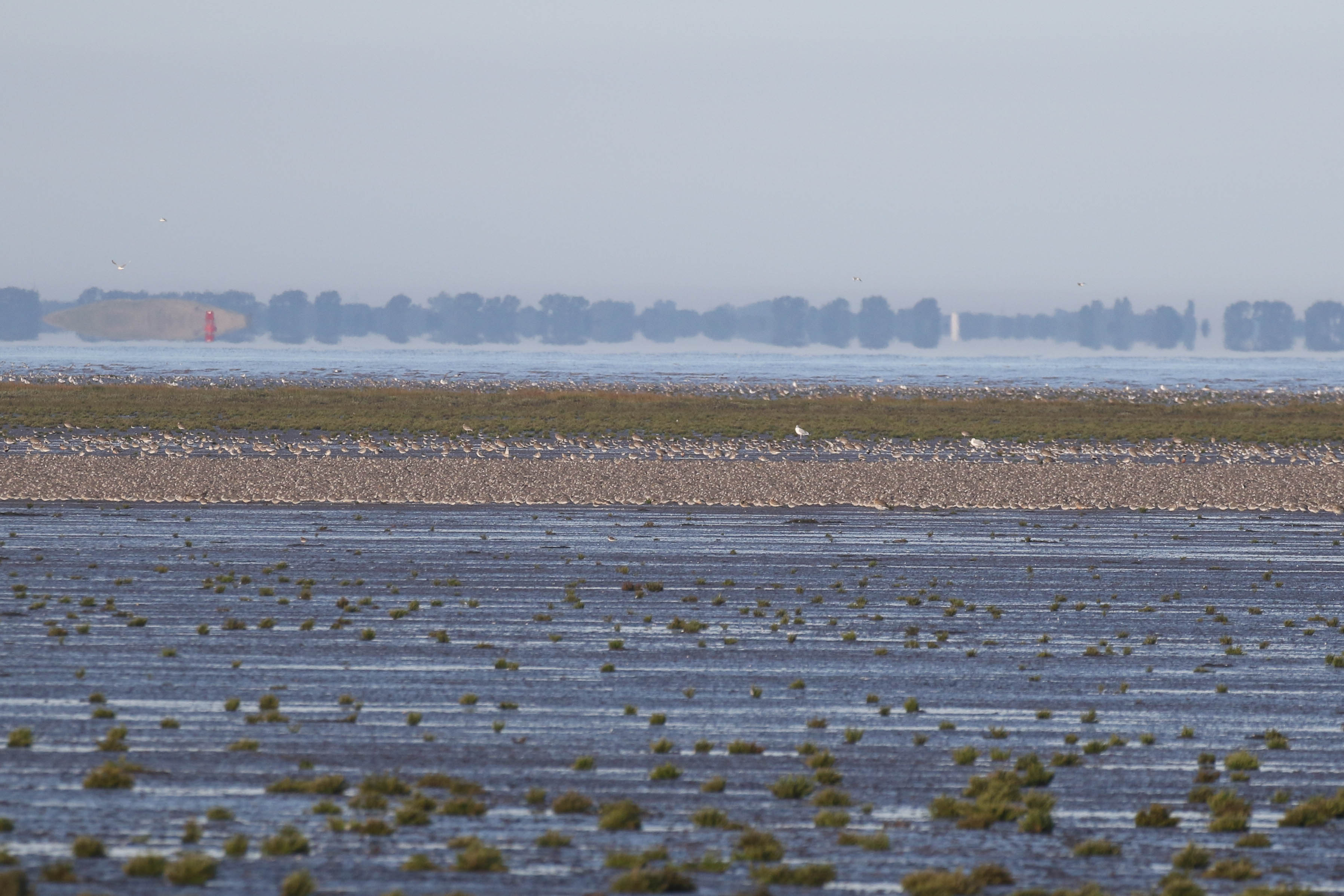
The birds were very nervous now. There was a ‘false alarm’ flush – the Knot took to the air but realised pretty quickly that there was no threat and settled back down. We scanned the fence posts beyond to see if there was still anything lurking – there was a Marsh Harrier on a post but no sign of anything else.
The water was still rising rapidly – a young Shelduck sailed past us up the channel at a surprising speed. All the waders were now increasingly packed into the last remaining corner of mud, the Knot in a big and very tight group; the Curlews, Bar-tailed Godwits and Grey Plovers more spaced out beyond. Some of the Bar-tailed Godwits and Grey Plovers were still largely in breeding plumage – rusty and black on their underparts respectively.
Suddenly everything erupted. The sound was amazing, a deep whoosh as 60,000+ pairs of wings panicked in unison. All the waders took to the air and as they started to whirl round over the Wash, we could see a Peregrine behind, making repeated passes into the smaller groups of Knot still flying low over the mud. But the Peregrine was a juvenile and inexperienced, and didn’t catch anything. The element of surprise gone, it gave up and disappeared away over the saltmarsh.
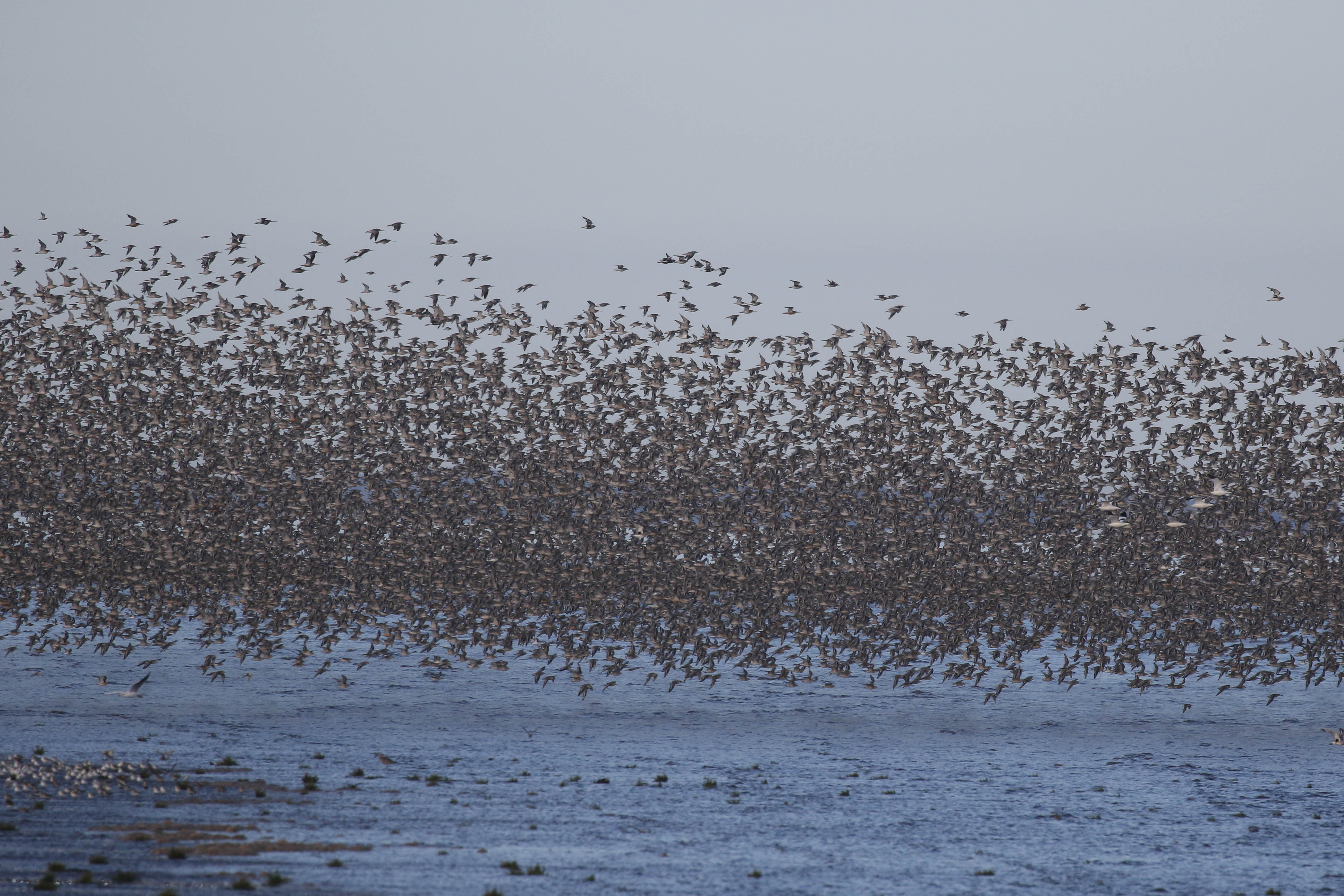
Wow! The Knot flocks continued to swirl out over the water, tens of thousands of birds twisting and turning, making a variety of interesting shapes again. Come started to tower up, huge waves overhead, criss-crossing over each other and in front of the moon at one point. Some went very high. It was mesmerising to watch them above us, but we had to be careful at times not to topple over backwards!
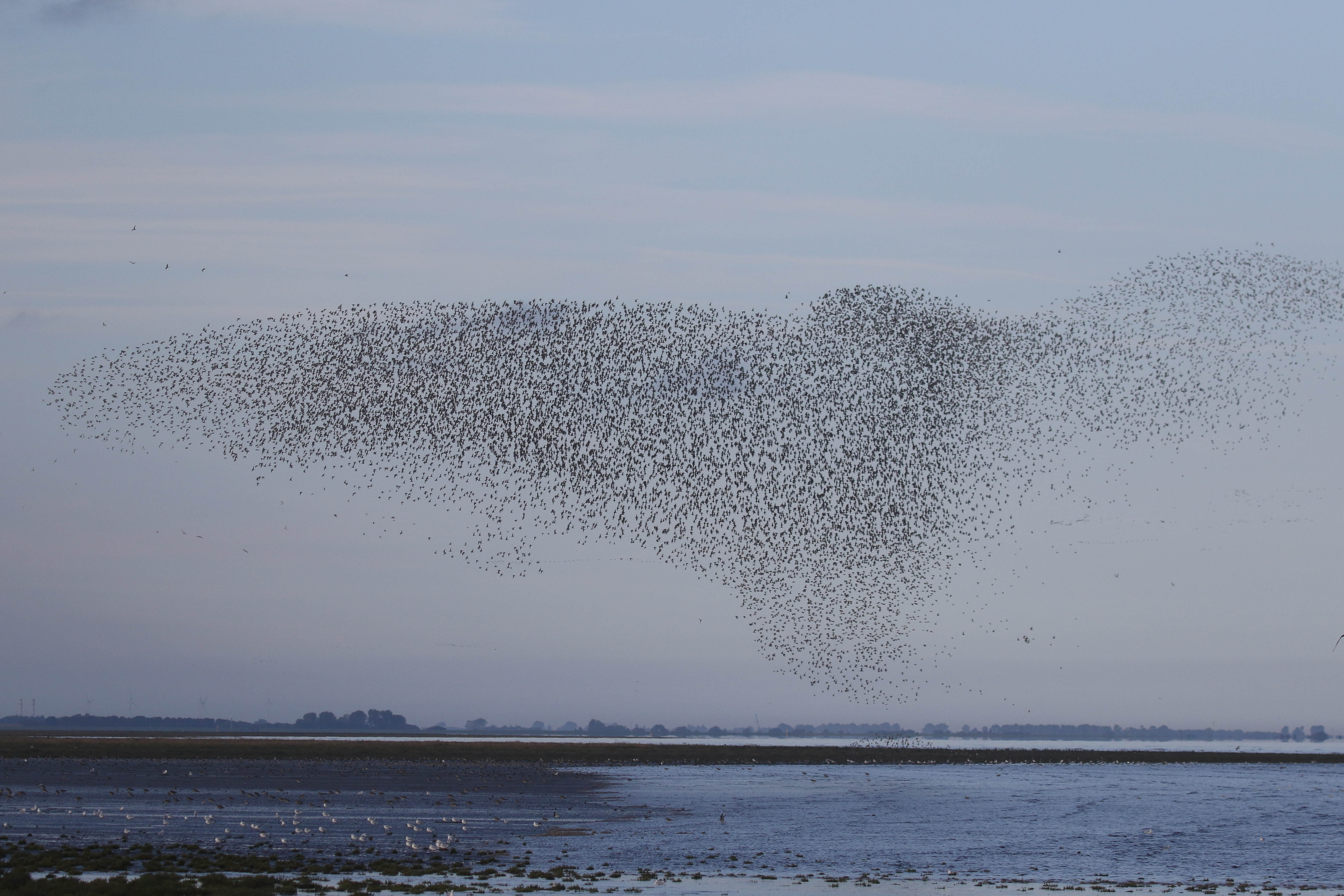
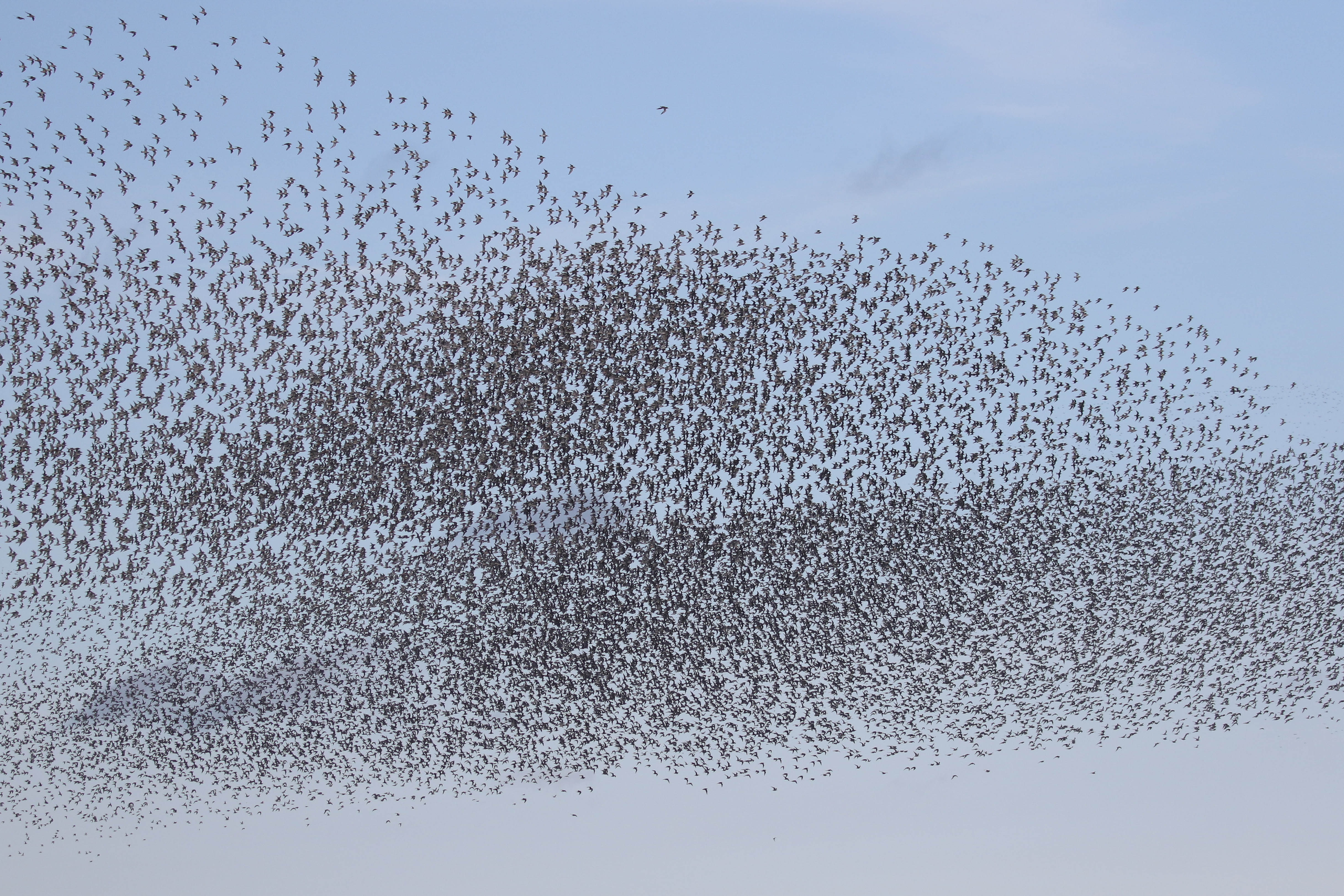
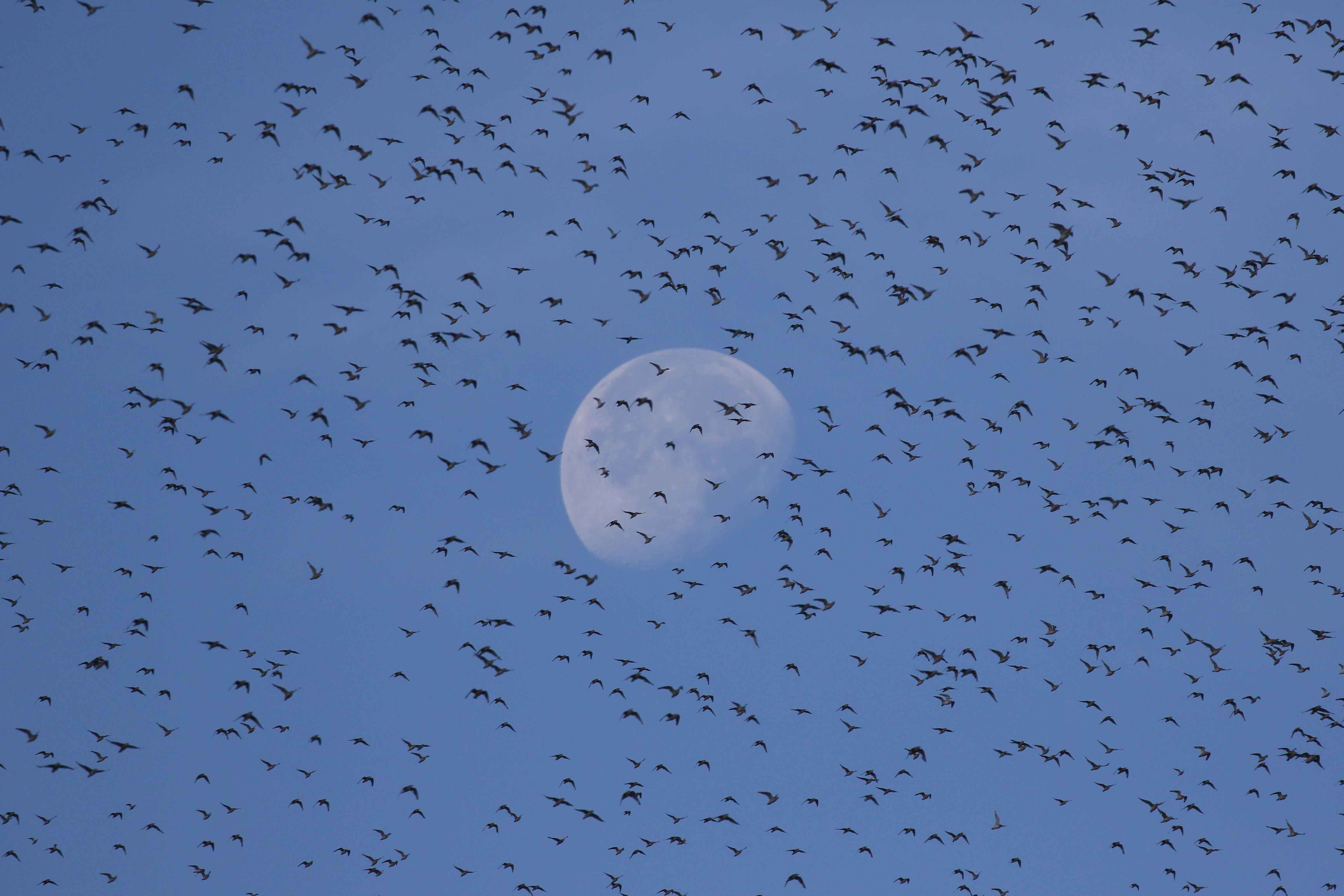
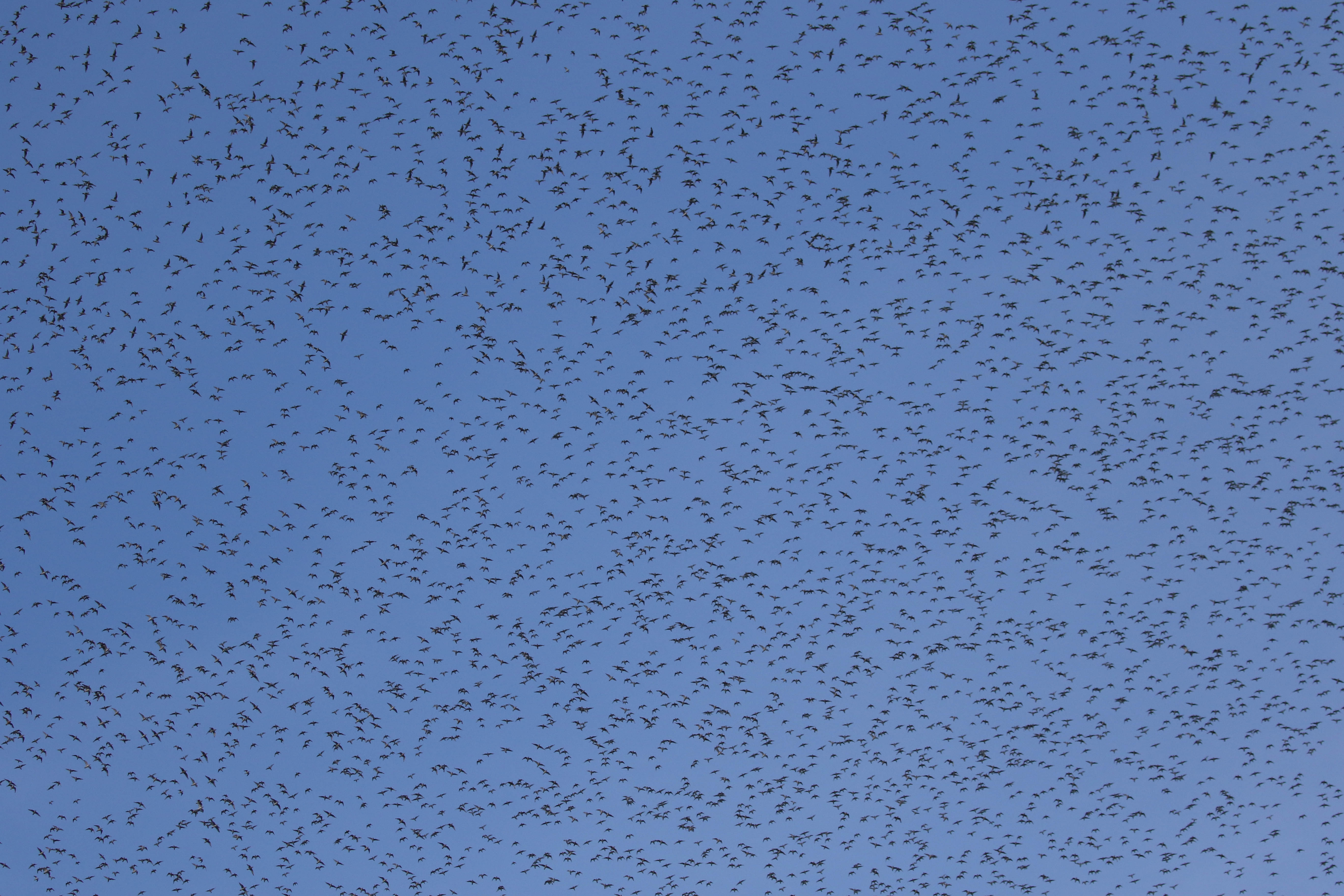
Some of the flocks of Knot came in high over the Pit behind us, and started to funnel down from the bottom of the lowest group as if sucked down by giant vacuum cleaner below. The airspace was congested – it was like watching stacked aircraft over Gatwick! – with flocks at different heights going in different directions, waiting for clearance to land. Some of the higher groups drifted back out over the Wash. We just stood and watched in awe. After funnelling in for what seemed like an age, eventually the numbers of Knot still in the air started to dwindle.
There was the usual early rush to get in the hides, but we waited out by the Wash and watched to the end of the display. A Yellow Wagtail flew over calling. When it looked as if there was space in South Screen, we decided to walk down. There were lots of Meadow Pipits feeding on the short grass, and we caught the back end of a Wheatear as it flew away from us.
By the time we got there South Screen was full so we continued round and into Knots Landing. Most of the Knot were roosting on the islands at the other end of the Pit, but there was a nice different selection of waders down this end. It is difficult to get a clear view with a scope through the one-way glass, but we managed to line up on a couple of smartly marked Bar-tailed Godwits in with the plainer Black-tailed Godwits on the end of the island right in front of the hide.
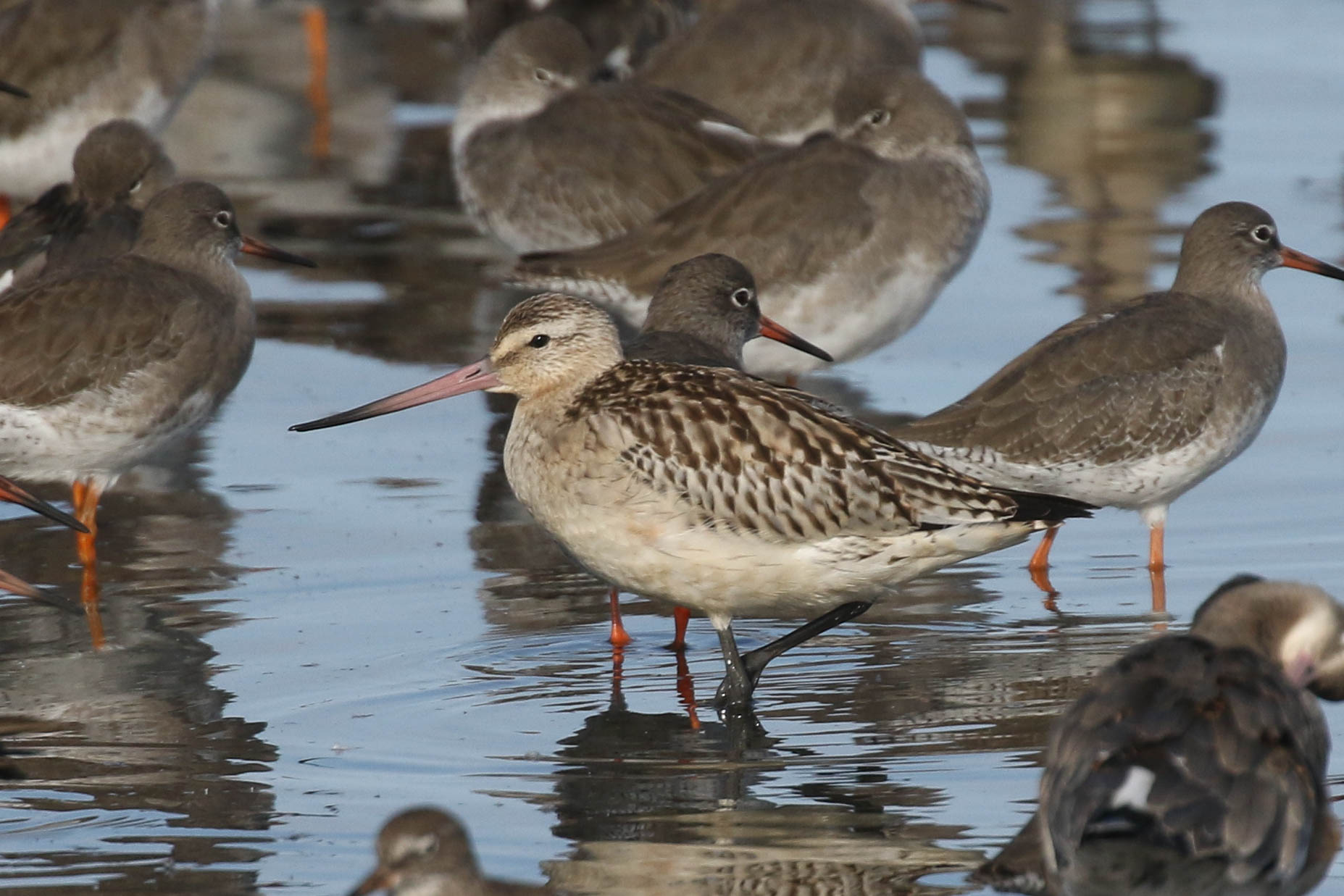
There were lots of Redshank and Dunlin packed in with the godwits. Scanning through, we found a Curlew Sandpiper on one of the closest islands, but it spent most of its time asleep! Two more were further back. Occasionally there would be some pushing and shoving on the island and the sleeping waders would wake up. When a couple of geese stirred everything up, we found the first Curlew Sandpiper had been joined by a second.
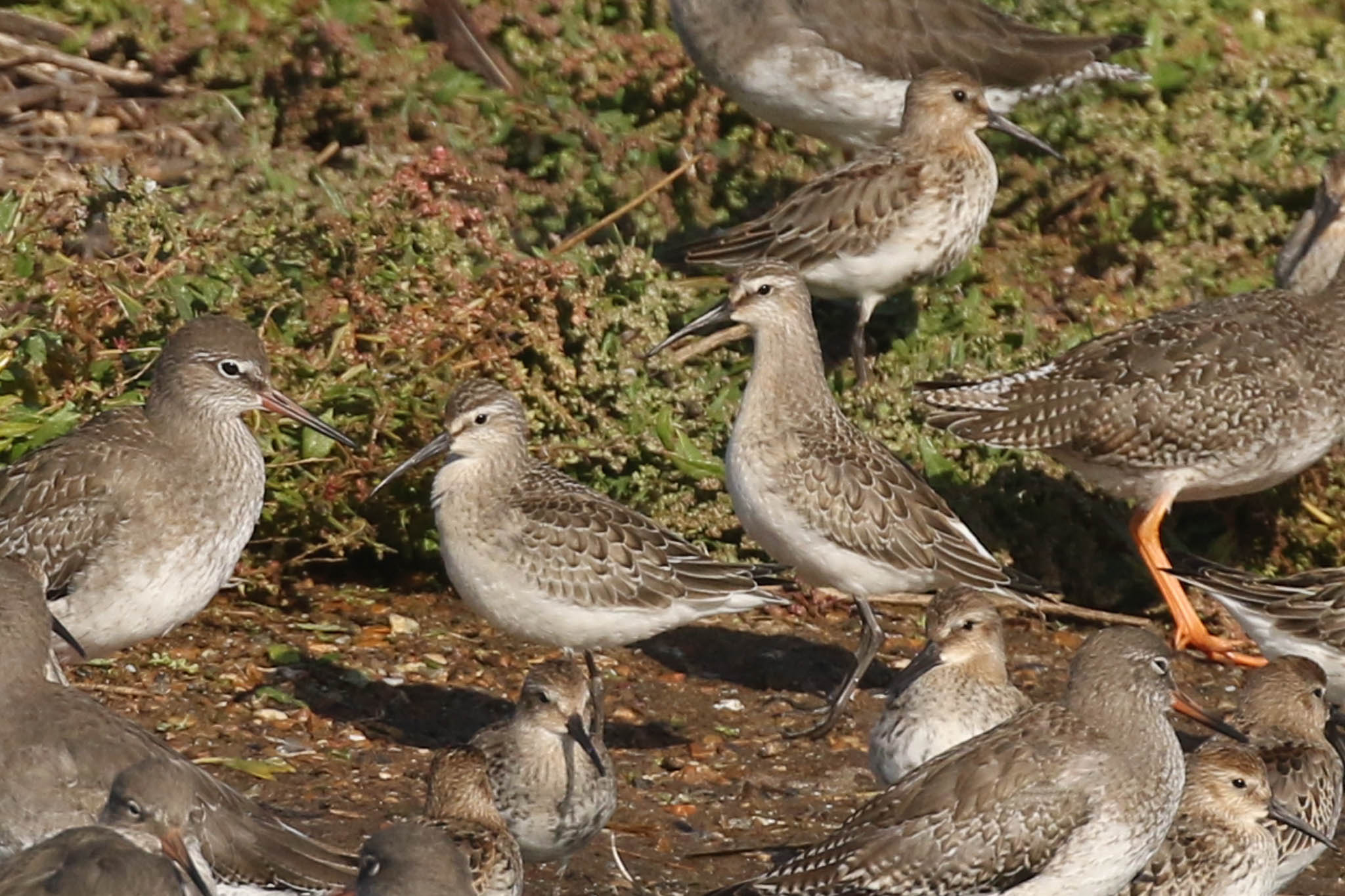
The Curlew Sandpipers were all juveniles. They are on their way from breeding grounds in central Siberia to winter in Africa. The adults leave earlier and the juveniles then have to find their own way. Amazing to think that these small birds had been hatched in Siberia just a few weeks ago and were now on such an incredible journey.
There were a few Knot in with the other waders at this end of the Pit, mainly tucked in behind the godwits. We managed to get the scope on them, some still with the remnants of rusty breeding plumage. A single Ruff dropped into the middle of the melee – looking rather out of place here – and there were one or two Avocets sleeping around the edges. Two Common Sandpipers were feeding round the gravel edge of the Pit, and walked along the edge right below the front of the hide at one point.
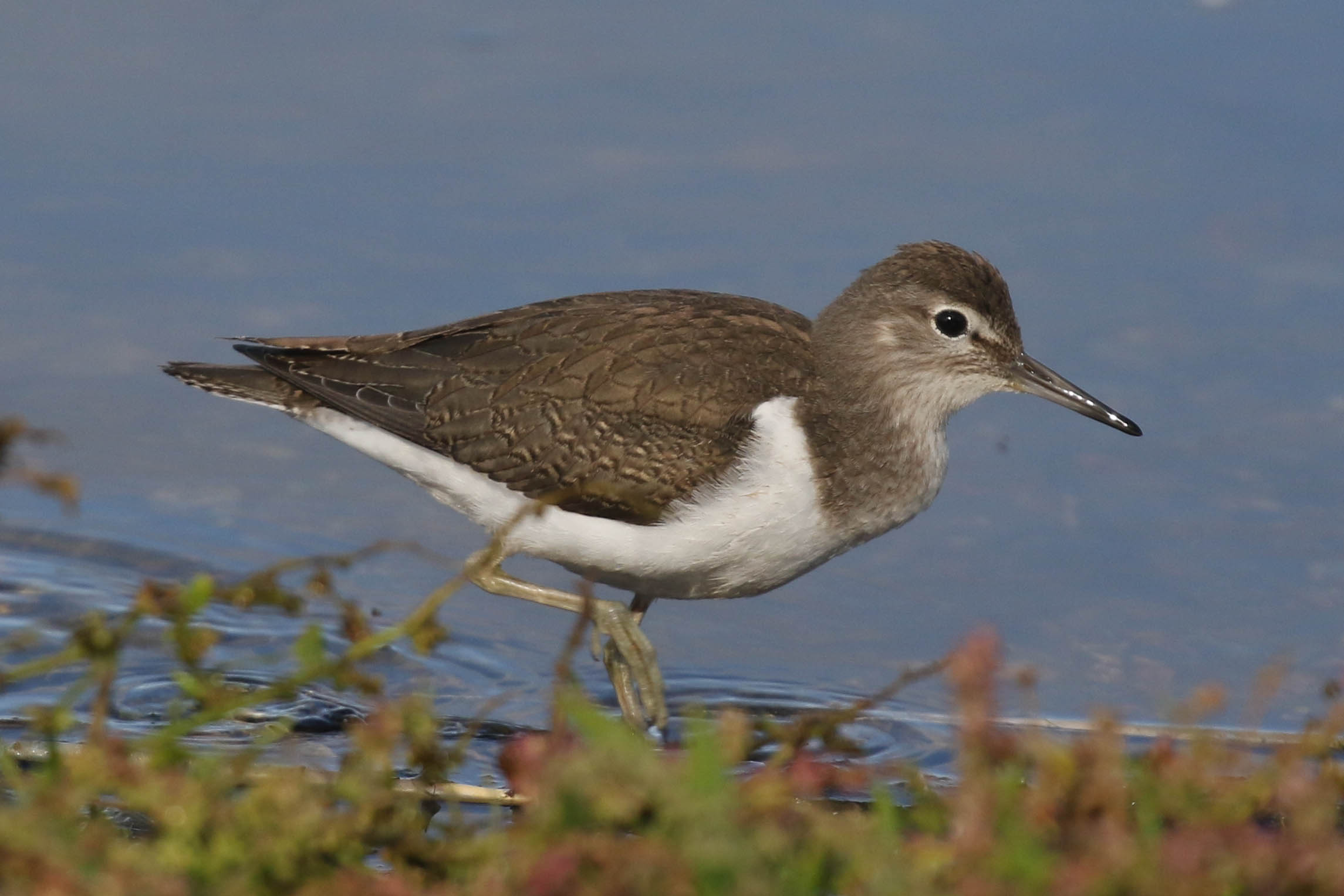
Sixteen Spoonbills were roosting on the Pit this morning, around the rocks a little further back, so we turned the scope on those too, for a closer look. Typically for Spoonbills, they were mostly asleep but one or two did show off their bills.
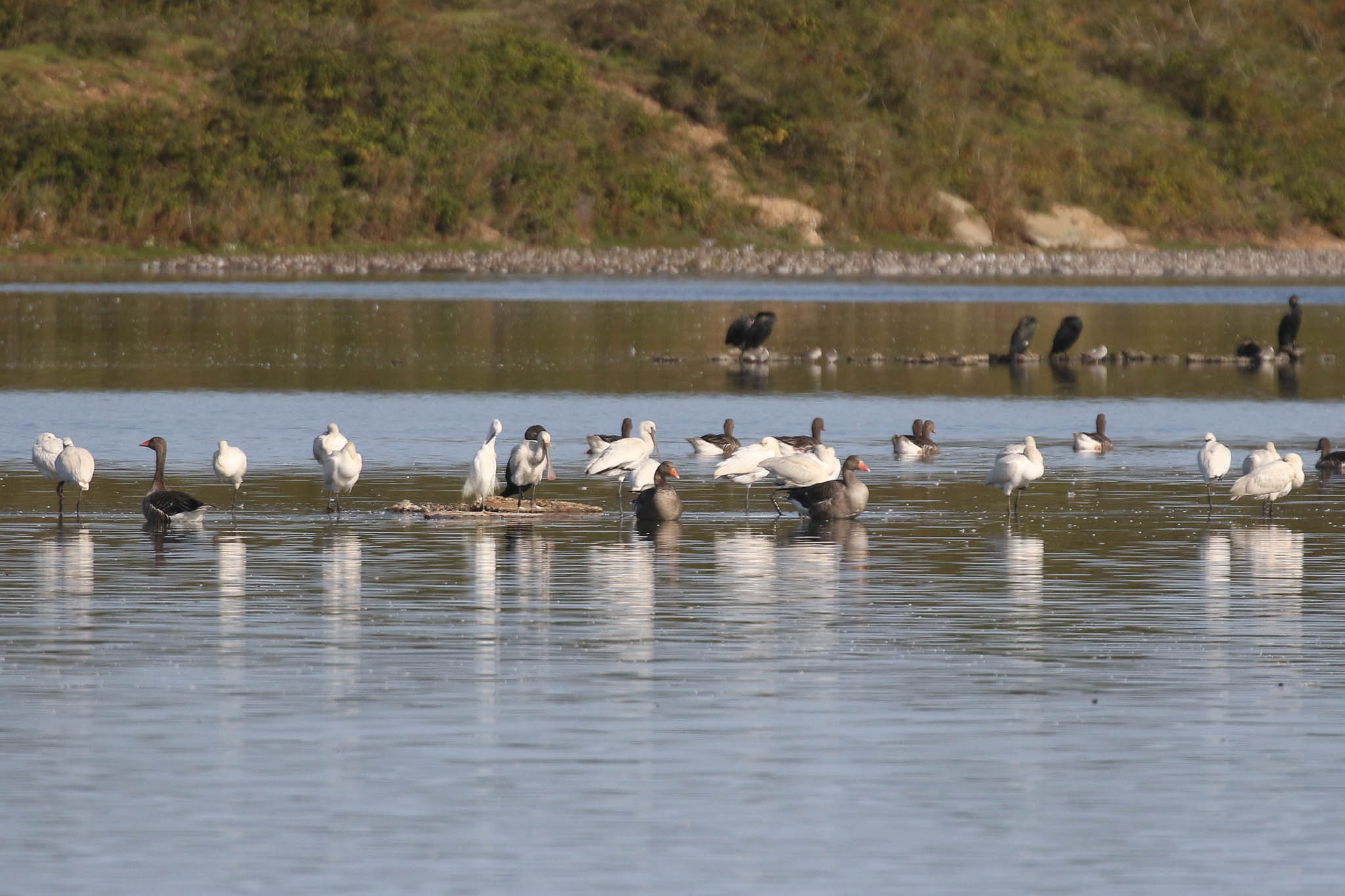
It was still only about half an hour after high tide, but we saw the first large flock of Knot took off from one of the islands at the far end and headed out towards the Wash. We still wanted to have a look in Shore Hide, so we walked back round. On our way, another huge flock of Knot came out from the Pit, but looking across to the Wash we could see there was next to no mud reappearing yet. Most of the Knot turned round and flew back, dropping back down into the Pit again. A bit premature!
We had better views of the Wheatear now, feeding on the short grass by the path ahead of us. Eventually it flew across in front of us, flashing its white rump, and over the bank. A Cetti’s Warbler was singing from somewhere in the brambles as we made our way into Shore Hide.
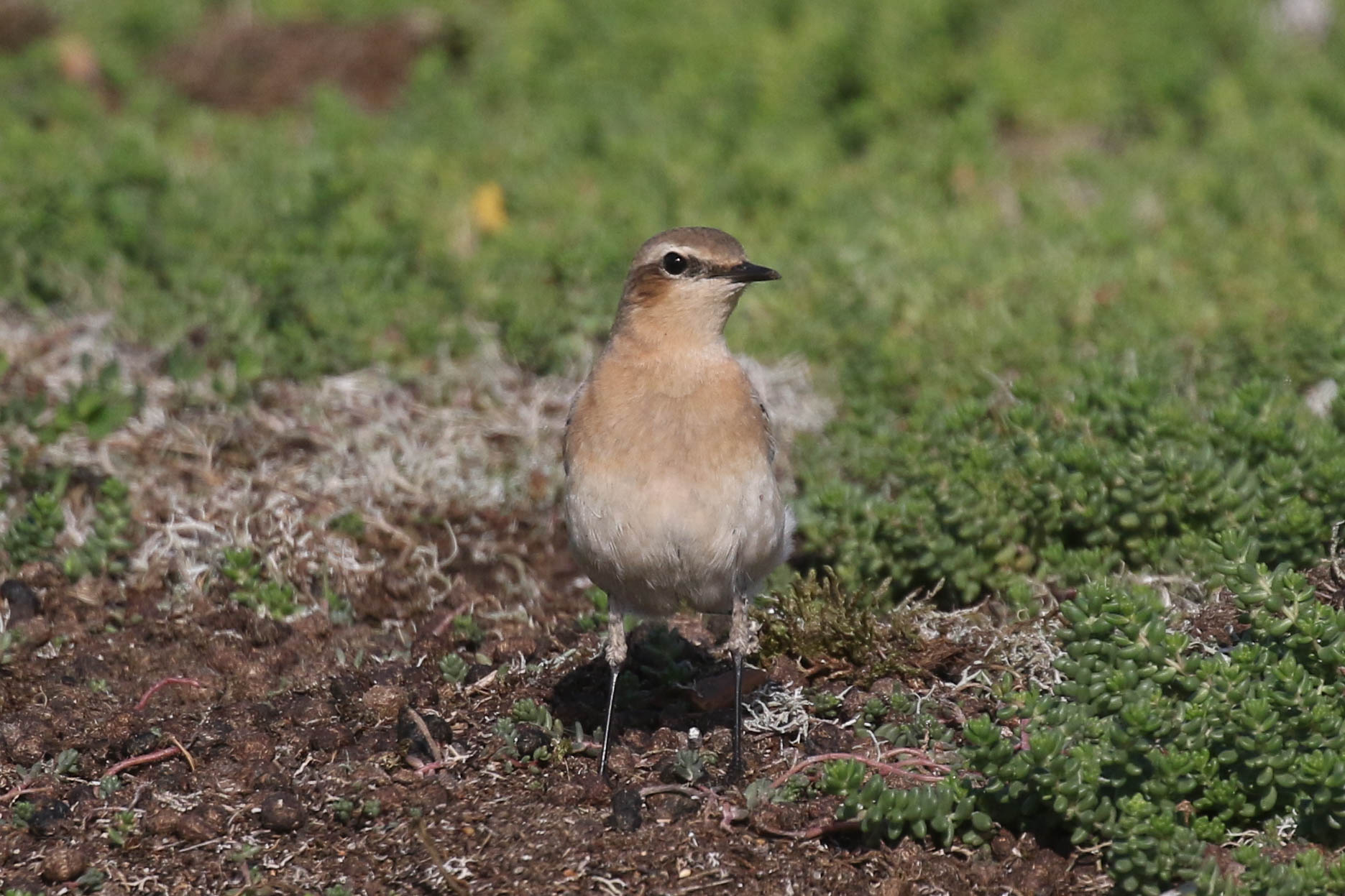
There were still quite a few people in the hide, at the end looking out to the islands where the Knot were still packed in tightly. We put the scope on the rocks out in the middle, where at least 10 Spotted Redshanks were roosting in amongst the Cormorants. It was a better view of the Spoonbills from here, not looking through the one-way glass, but they were still mostly asleep. A Moorhen was clambering uo the brambles eating blackberries right in front of the hide.
We made our way back out to the edge of the Wash. The Oystercatchers started to emerge from the Pit first, a seemingly never-ending succession of small groups flying up behind us and right overhead. Many were in heavy wing moult, with big gaps in their wings – the Wash is a very important moult site for several of the species of waders. A large group of Oystercatchers had already gathered on the mud in the far corner. As the tide went out, we watched a reverse March of the Oystercatchers – the ones which had flown out earlier started walking away from the edge of the saltmarsh, down processing across to join the group which had come out more recently and landed further down.
A small group of Little Terns were hovering out over the shallow water now, further back. We got them in the scope and they were joined by a Common Tern which helped to illustrate just how ‘little’ they really are. A Mediterranean Gull flew past, flashing its pure white wing tips. Two Common Sandpipers flew round, flicking their bowed wings, looking for somewhere to land.
The Knot were slow to come out of the Pit today, probably after the false start earlier. Periodically, a group would fly out, coming low over the bank just to the north of us, heading in lines out over the water and landing on the mud.
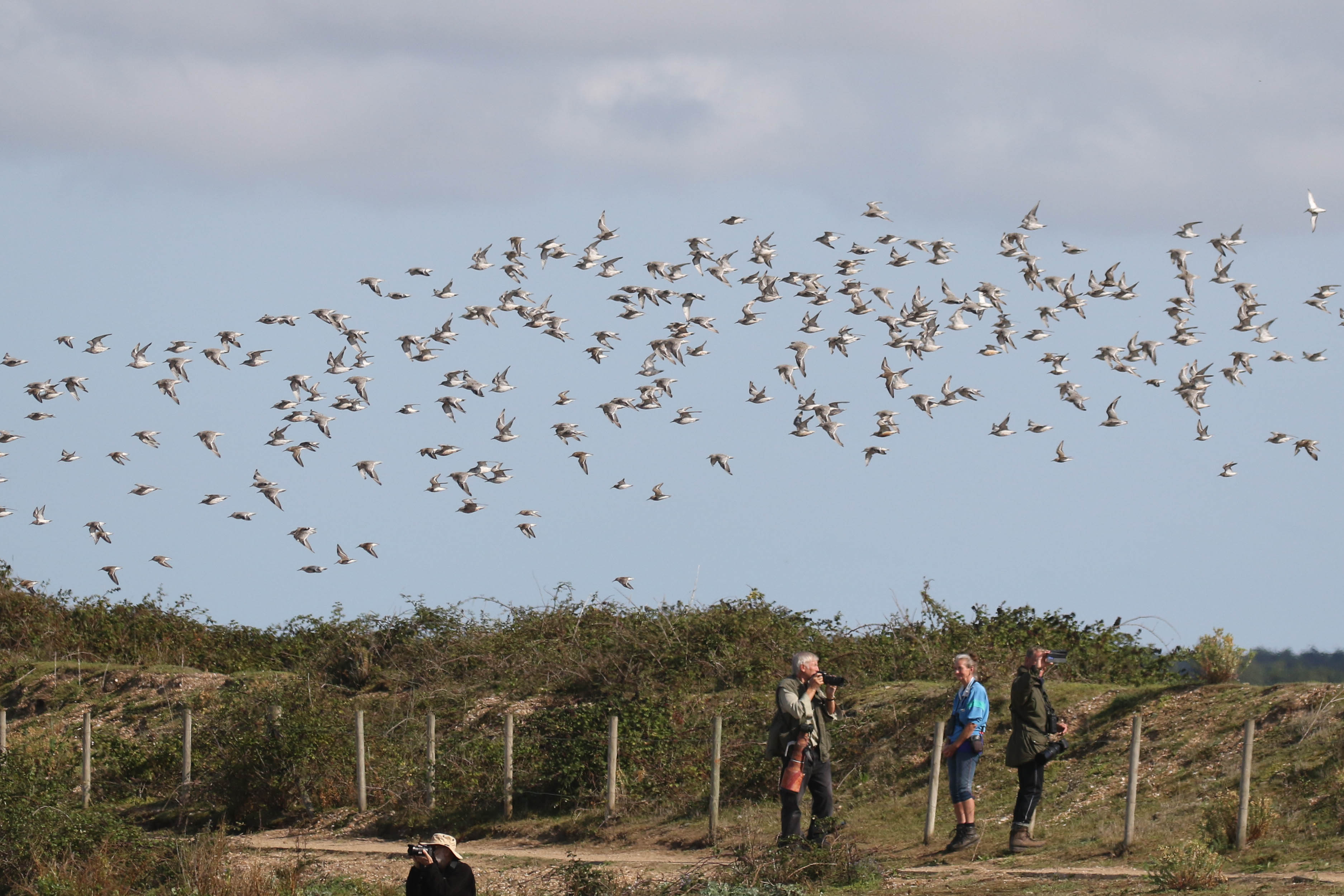
The Perergine put in another appearance, stirring everything up again out on the mud. Cue more swirling flocks. But it quickly lost interest and unfortunately didn’t come in to wake up all the Knot still dozing on the Pit.
It was time for us to move on. We called in at Rotary Hide briefly on our way back. Most of the islands this end were still densely packed with Knot. The small rocky tern island in front still held lots of Turnstone, Dunlin and a few Sanderling.
We made our way over to Titchwell next, in perfect time for an early lunch. Several Willow Emerald damselflies were flying around the sallows in the picnic area – it has been a good year for them, with numbers continuing to increase. A Common Darter and then a Speckled Wood both decided to land on one member of group!
Afterwards, we had a quick look out on the reserve. A Marsh Harrier was circling over the reeds out on Thornham Marsh as we walked out. A Green Sandpiper flew over the path ahead of us and dropped down on the old pool, but it is now too overgrown to see anything on there. Two Chinese Water Deer were feeding out on the saltmarsh.
A large white shape lurking in the reeds on the edge of the reedbed pool was a Great White Egret – we could see its long yellow bill in the scope. A drake Gadwall on the edge of the reedbed channel was coming out of eclipse already and we admired its new scalloped breast feathers. We could hear Bearded Tits in the reeds, but they were keeping well down out of view. We stopped to look at a Common Lizard basking on the fence by the path to Island Hide, and looked back to see a Bearded Tit briefly flying away low over the reeds.
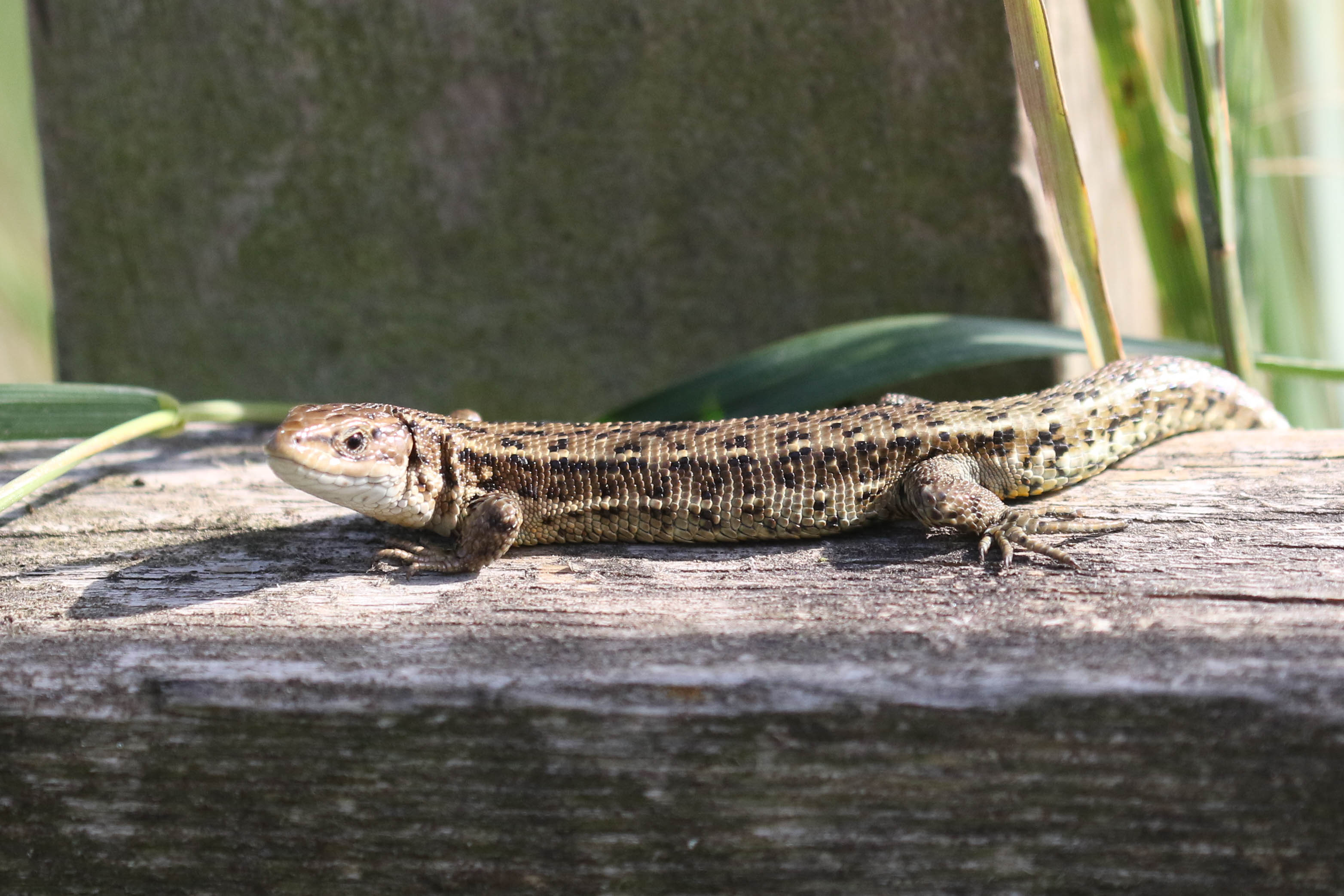
We stopped in the sunshine on the bank to scan the Freshmarsh. There were lots of Black-tailed Godwits feeding in the deeper water, and lots of Ruff in a confusing array of different colours and sizes – adults and juveniles, males and females. There was a good number of Avocets on here too still. There is not much exposed mud here for smaller waders at the moment, but we did find a couple of Common Snipe and a single Common Sandpiper right over in the far corner on the edge of the new bund.
There were not so many Golden Plovers as recently when we arrived, and they were gathered on the edge of one of the new islands. However, while we were standing here, a succession of small groups flew in and landed on the bund. They looked very smart in the sunshine, many still with the remnants of their summer black bellies.
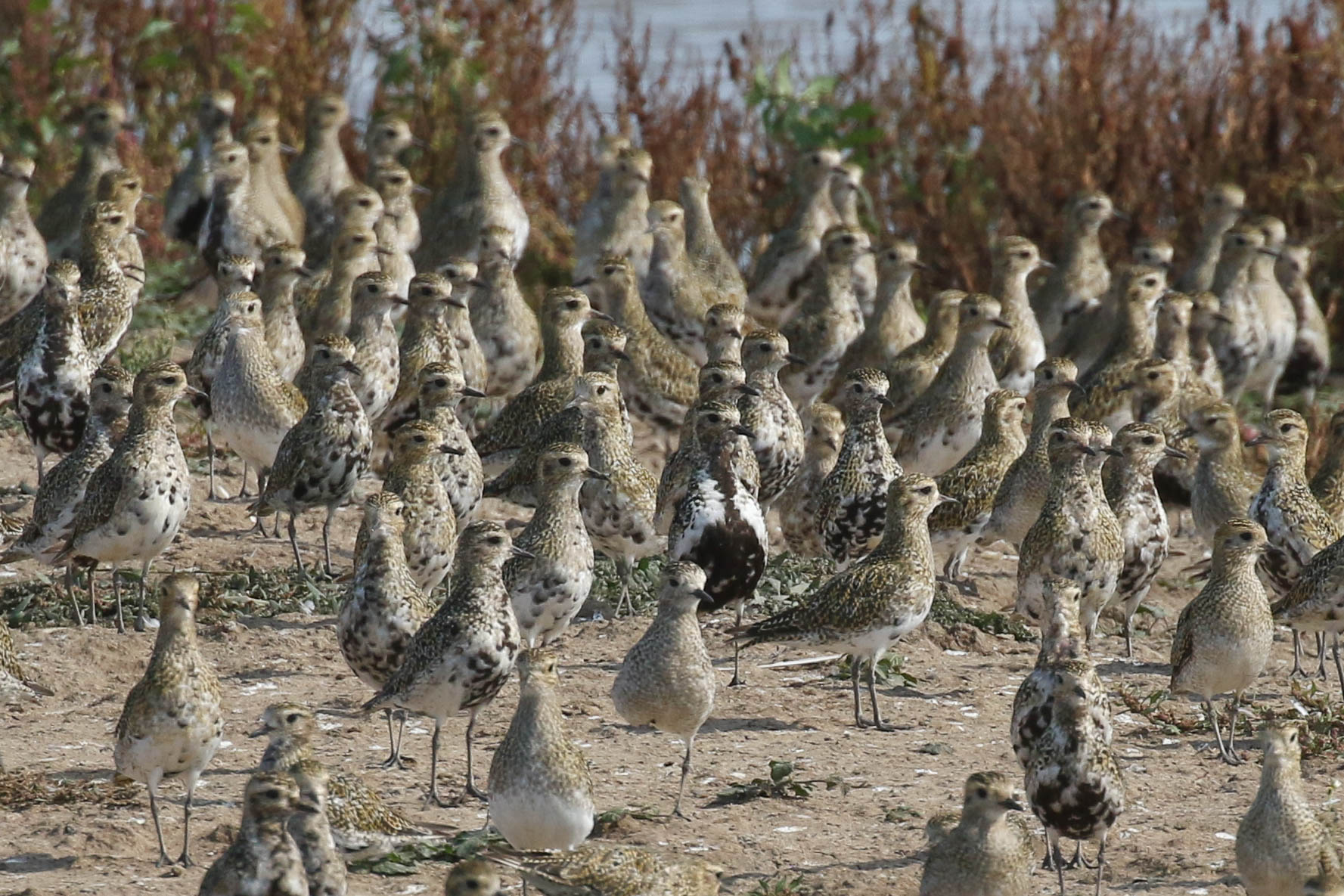
We wanted to have a quick look out at the beach. As we walked out past Volunteer Marsh, there were lots of Redshank and a couple of Curlew in the channel at the far end of Volunteer Marsh. The Tidal Pools are not draining again, and the water level was stuck on high after this morning’s big tide. A small group of Turnstones were roosting on the spit, but with the tide out now, most of the waders were feeding out on the beach. We stopped briefly to watch the Sea Aster Bees buzzing around their holes in the edge of the path.
Over the dunes, we stood and scanned the sea. There were just a couple of Great Crested Grebes on the water offshore. As we suspected, the Oystercatchers, Bar-tailed Godwits and more Turnstones were still feeding out on the mussel beds. It was lovely out here in the sunshine, but unfortunately it was time to call it a day and head back. After an early start, we had promised an early finish so that everyone could get away in good time.
It had been a very enjoyable three days, with a good variety of different birds and places. The Wader Spectacular is always a highlight and was the perfect way to round things off today.
















